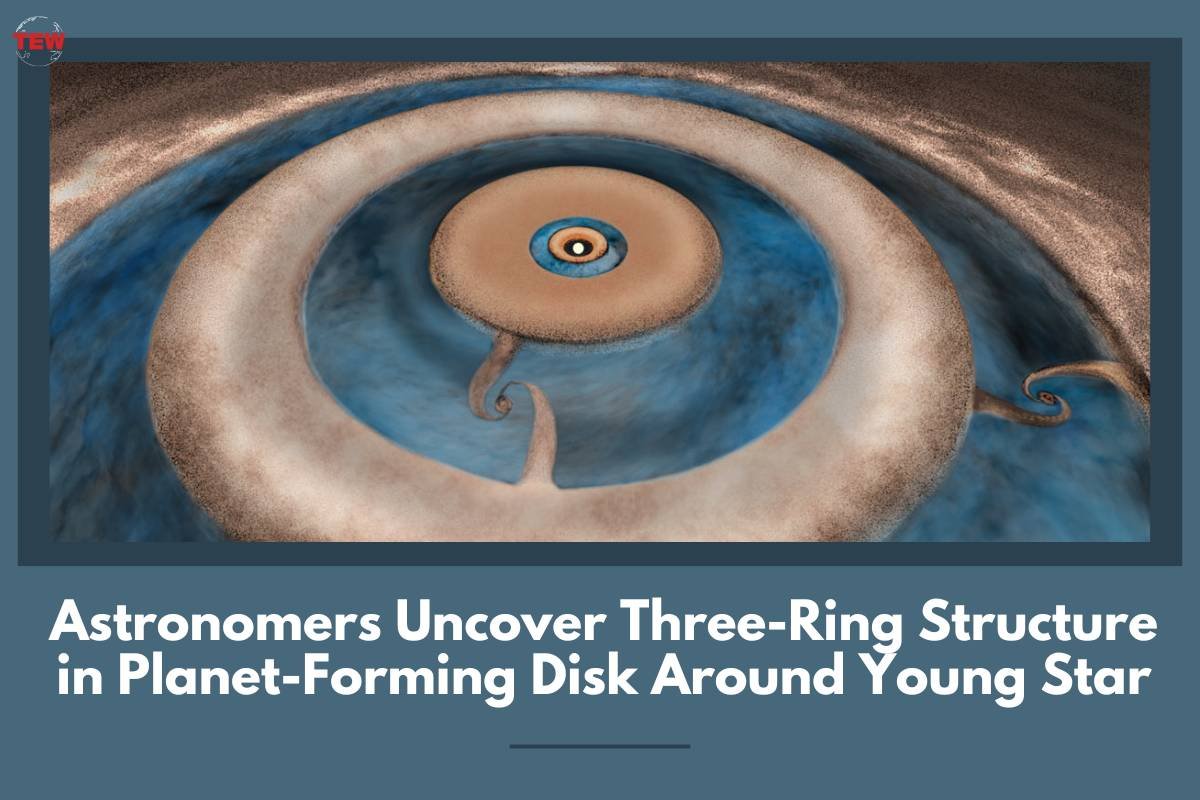(Source – Phys.org)
In a groundbreaking astronomers discovery, the Very Large Telescope Interferometer (VLTI) has delved into the intricate details of the planet-forming disk encircling HD 144432, a youthful star situated approximately 500 light-years away from Earth. The findings, led by the Max Planck Institute for Astronomy, unveil a complex three-ring structure within the region where planets are currently taking shape around this celestial body.
Within the interstitial spaces of these concentric rings, a rich mixture of dust, gas, and elemental components acts as the essential building blocks for burgeoning planets. This revelation represents a crucial advancement in our understanding of planetary formation.
Astronomers Discover Dust distribution in the disk’s innermost region
Astoundingly, the first ring identified by the ground-based telescope lies within the orbit of Mercury, followed by a second ring mirroring Mars’s trajectory, and a third aligning closely with Jupiter’s orbit. HD 144432 stands out as a unique case, being the first instance of a young host star harboring such a sophisticated ring system in such proximity.
Roy van Boekel, a scientist at the Max Planck Institute for Astronomy and co-author of the study, expressed excitement about the findings, stating, “When studying the dust distribution in the disk’s innermost region, we detected for the first time a complex structure in which dust piles up in three concentric rings in such an environment.” He further emphasized that this region corresponds to the zone where rocky planets formed in our own Solar System.
The dust-rich zone identified in the study may play a pivotal role in the eventual development of rocky planets similar to Earth. Astronomers Discover speculate that the masses of potential planets emerging within these rings rival the size of the gas giant Jupiter.
An in-depth analysis of the dust composition surrounding the disk yielded significant insights. The researchers identified various silicates and minerals reminiscent of those found in Earth’s crust and mantle. Additionally, the team speculates the presence of metallic iron, which, if confirmed, would mark the first detection of such a component in a planet-forming disk.
A glimpse into the early stages of planetary formation
From a chemical perspective, the team proposes that a combination of iron and silicate is more likely to exist in the hot inner regions of the disk. The observed dust surrounding HD 144432 exhibits temperatures ranging from a scorching 1800 Kelvin at the inner edge to a more moderate 300 Kelvin in the outer realms. Under such extreme conditions, the survival of carbon grains becomes challenging.
Roy van Boekel elaborated on the chemical composition, stating, “Astronomers Discover have thus far explained the observations of dusty disks with a mixture of carbon and silicate dust, materials that we see almost everywhere in the Universe.” The team believes that dust rich in iron and deficient in carbon aligns well with the conditions observed in our own Solar System, where both Mercury and Earth boast high iron content, with Earth having comparatively minimal carbon.
In conclusion, the groundbreaking study of the HD 144432 system provides a glimpse into the early stages of planetary formation, shedding light on the potential commonality between our Solar System and other celestial bodies across the universe. The intricate three-ring structure discovered around this young star opens new avenues for research, inviting scientists to explore the fascinating complexities of the cosmos.





